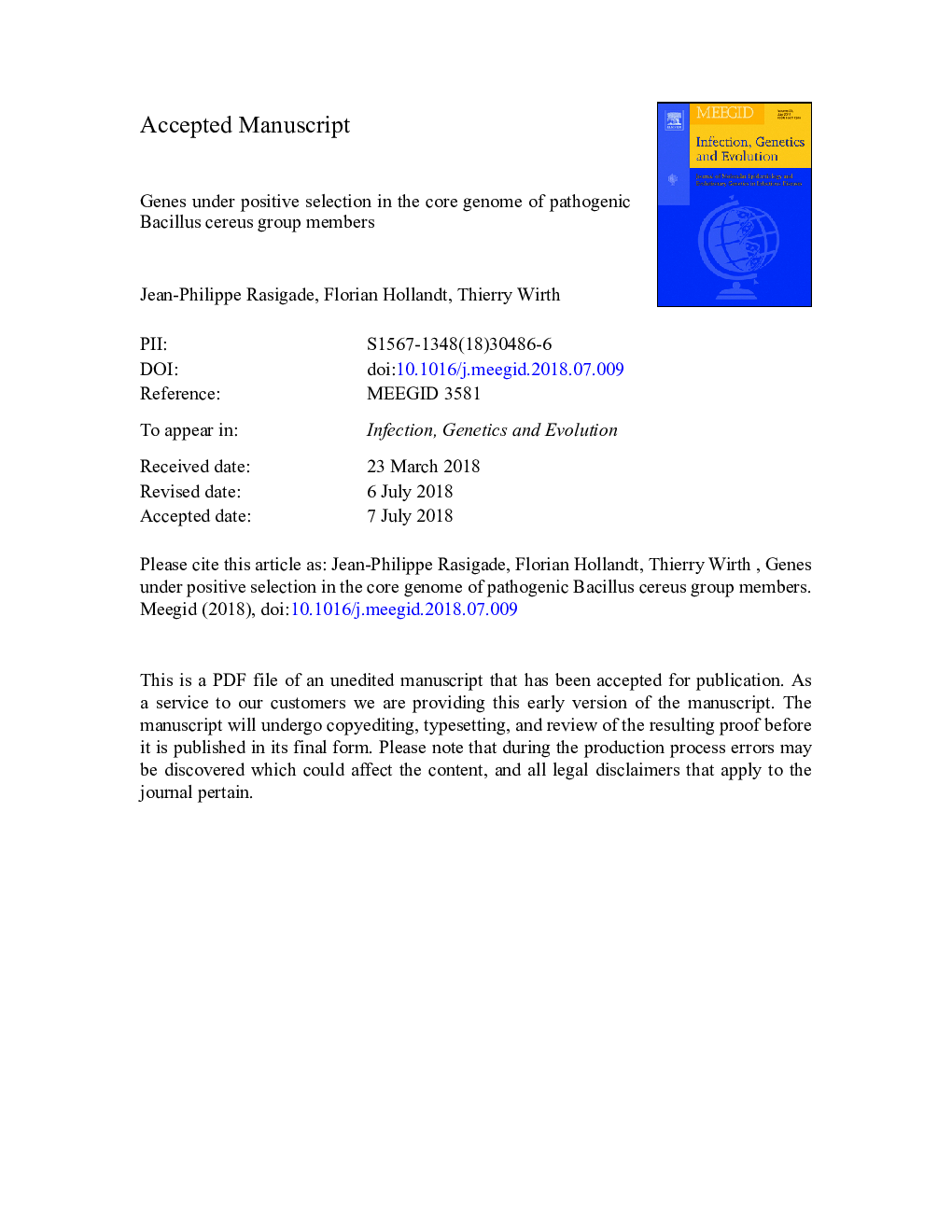| Article ID | Journal | Published Year | Pages | File Type |
|---|---|---|---|---|
| 8646474 | Infection, Genetics and Evolution | 2018 | 32 Pages |
Abstract
In this comparative genomics study our aim was to unravel genes under positive selection in the core genome of the Bacillus cereus group. Indeed, the members of this group share close genetic relationships but display a rather large phenotypic and ecological diversity, providing a unique opportunity for studying how genomic changes reflect ecological adaptation during the divergence of a bacterial group. For this purpose, we screened ten completely sequenced genomes of four pathogenic Bacillus species, finding that 254 out of 3093 genes have codon sites with dN/dS (Ï) values above one. These results remained unchanged after having disentangled the confounding effects of recombination and selection signature in a Bayesian framework. The presumably adaptive nucleotide polymorphisms are distributed over a wide range of biological functions, such as antibiotic resistance, DNA repair, nutrient uptake, metabolism, cell wall assembly and spore structure. Our results indicate that adaptation to animal hosts, whether as pathogens, saprophytes or symbionts, is the major driving force in the evolution of the Bacillus cereus group. Future work should seek to understand the evolutionary dynamics of both core and accessory genes in an integrative framework to ultimately unravel the key networks involved in host adaptation.
Keywords
Related Topics
Life Sciences
Agricultural and Biological Sciences
Ecology, Evolution, Behavior and Systematics
Authors
Jean-Philippe Rasigade, Florian Hollandt, Thierry Wirth,
